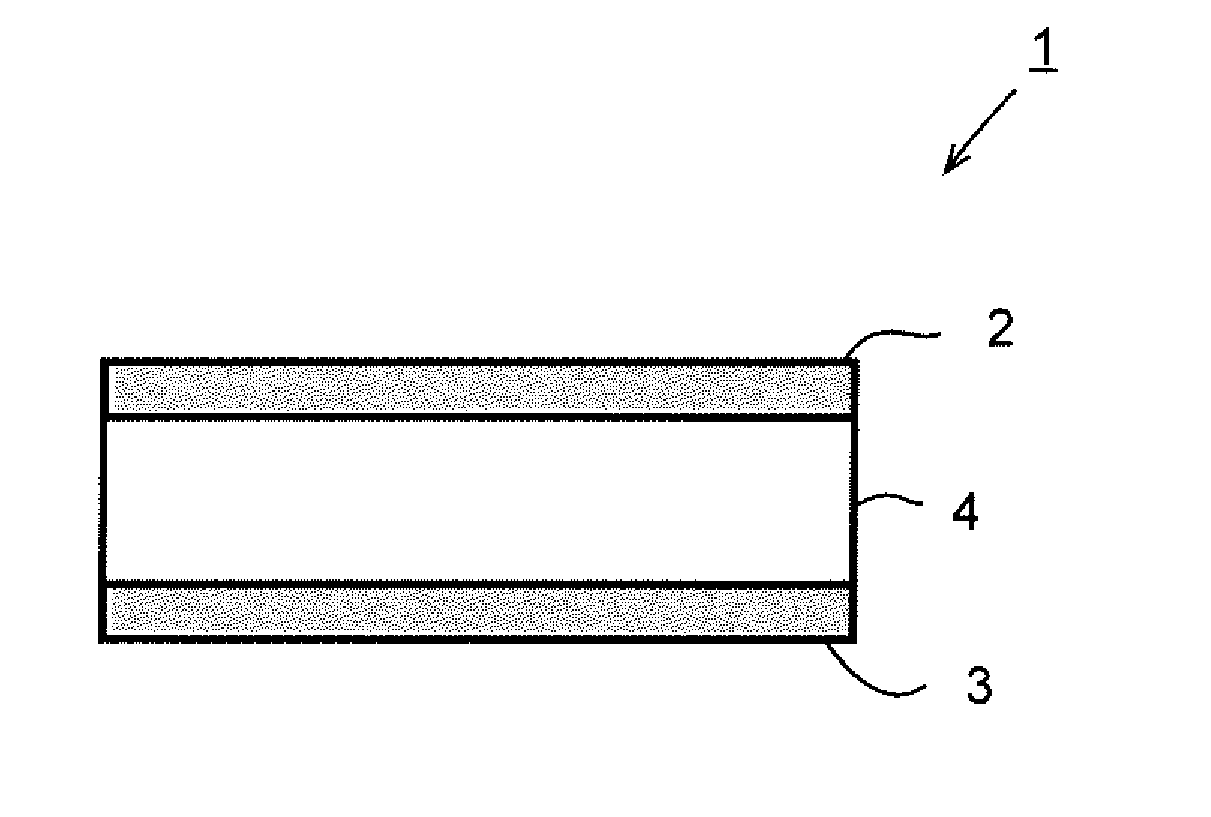Titanium composite material and titanium material for hot working
a composite material and titanium technology, applied in the field of titanium composite material and titanium material for hot working, can solve the problems of high corrosion resistance, high cost of heat-resistant titanium alloys in comparison to commercially pure titanium, and inability to expect high corrosion resistan
- Summary
- Abstract
- Description
- Claims
- Application Information
AI Technical Summary
Benefits of technology
Problems solved by technology
Method used
Image
Examples
example 1
Example 1-1
[0296]Titanium sponge (JIS Class 1, Class 2, and Class 3, granularity=0.25 to 19 mm) produced by the Kroll process and pure titanium scraps (JIS Class 1, Class 2, and Class 3) were used as the titanium lump to be supplied into titanium materials. Further, using Ti-0.06Pd alloy sheet products (thickness was 0.5 to 20 mm), rectangular parallelepipeds having a thickness of 50 to 100 mm, a width of 100 mm, and a length of 120 mm were fabricated as the packages.
[0297]When manufacturing the titanium material, first, five titanium sheets were preassembled into a box shape, and thereafter, a titanium sponge was supplied into the box shape, and an opening portion of the preassembled box is covered with a titanium sheet. For some titanium materials, titanium sponges (sponge briquettes) formed into a briquette shape or briquettes obtained by mixing a titanium sponge and a pure titanium scrap were used instead of the titanium sponges. The preassembled titanium material was put inside...
example 1-2
[0312]Titanium sponge (JIS Class 1, granularity=0.25 mm or more and 19 mm or less) produced by the Kroll process was used as the titanium lumps to be supplied into titanium materials. Further, using a titanium alloy containing predetermined components (thickness was 10 mm), rectangular parallelepipeds having a thickness of 75 mm, a width of 100 mm, and a length of 120 mm were fabricated as the package.
[0313]When manufacturing the titanium material, first, five titanium sheets were preassembled into a box shape, and thereafter, a titanium sponge was supplied into the box shape, and an opening portion of the preassembled box is covered with a titanium sheet. The preassembled titanium material was put inside a vacuum chamber, and the pressure of the vacuum chamber was reduced to 8.7×10−3 Pa, and thereafter seams of the entire circumference of the package were welded and sealed by an electron beam.
[0314]By the processes described above, a package the entire circumference of which is sea...
example 1-3
[0329]Titanium sponge (JIS Class 1, granularity=0.25 mm or more and 19 mm or less) produced by the Kroll process was used as the titanium lumps to be supplied into titanium materials. Further, using Ti-0.06Pd alloy sheet products, rectangular parallelepipeds having a thickness of 25 to 75 mm, a width of 100 mm, and a length of 120 mm were manufactured as the packages.
[0330]When manufacturing the titanium material, first, five titanium sheets were preassembled into a box shape, and thereafter, a titanium sponge was supplied into the box shape, and an opening portion of the preassembled box is covered with a titanium sheet. The preassembled titanium material was put inside a vacuum chamber, and the pressure of the vacuum chamber was reduced to 8.7×10−3 Pa, and thereafter seams of the entire circumference of the package were welded and sealed by an electron beam.
[0331]By the processes described above, a package the entire circumference of which is sealed with titanium-alloy made sheets...
PUM
| Property | Measurement | Unit |
|---|---|---|
| thickness | aaaaa | aaaaa |
| porosity | aaaaa | aaaaa |
| porosity | aaaaa | aaaaa |
Abstract
Description
Claims
Application Information
 Login to View More
Login to View More - R&D
- Intellectual Property
- Life Sciences
- Materials
- Tech Scout
- Unparalleled Data Quality
- Higher Quality Content
- 60% Fewer Hallucinations
Browse by: Latest US Patents, China's latest patents, Technical Efficacy Thesaurus, Application Domain, Technology Topic, Popular Technical Reports.
© 2025 PatSnap. All rights reserved.Legal|Privacy policy|Modern Slavery Act Transparency Statement|Sitemap|About US| Contact US: help@patsnap.com



